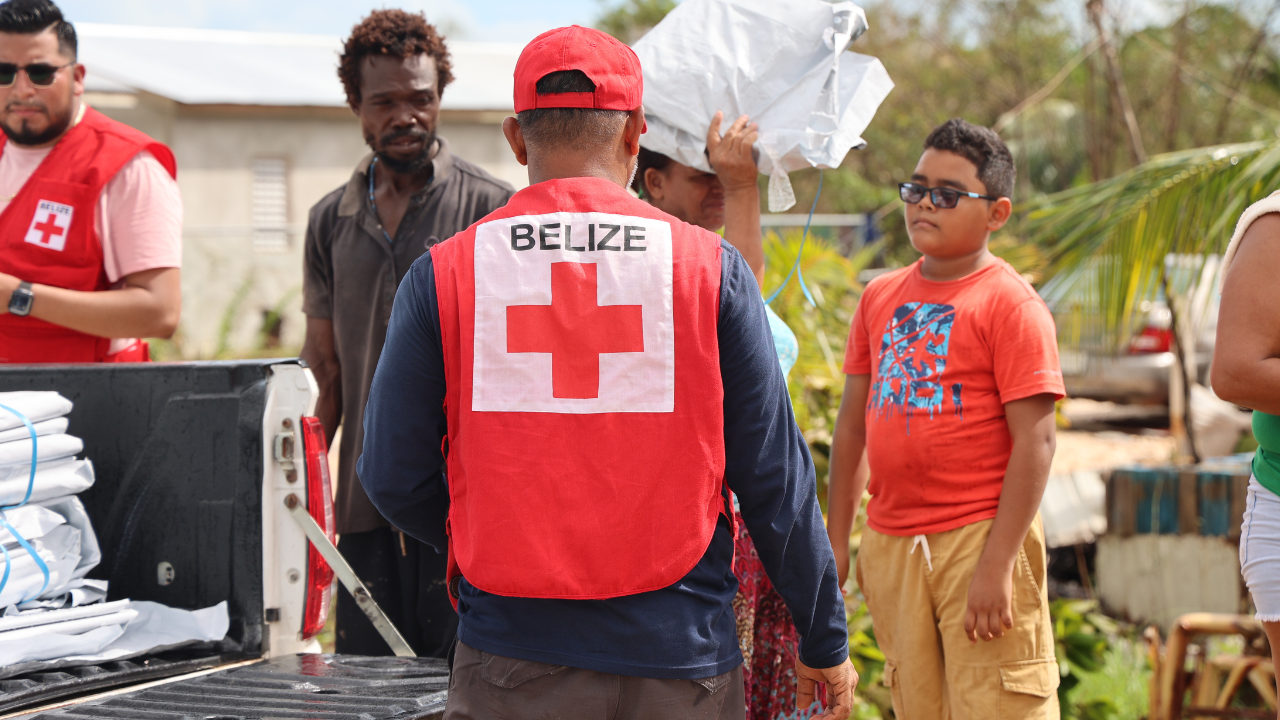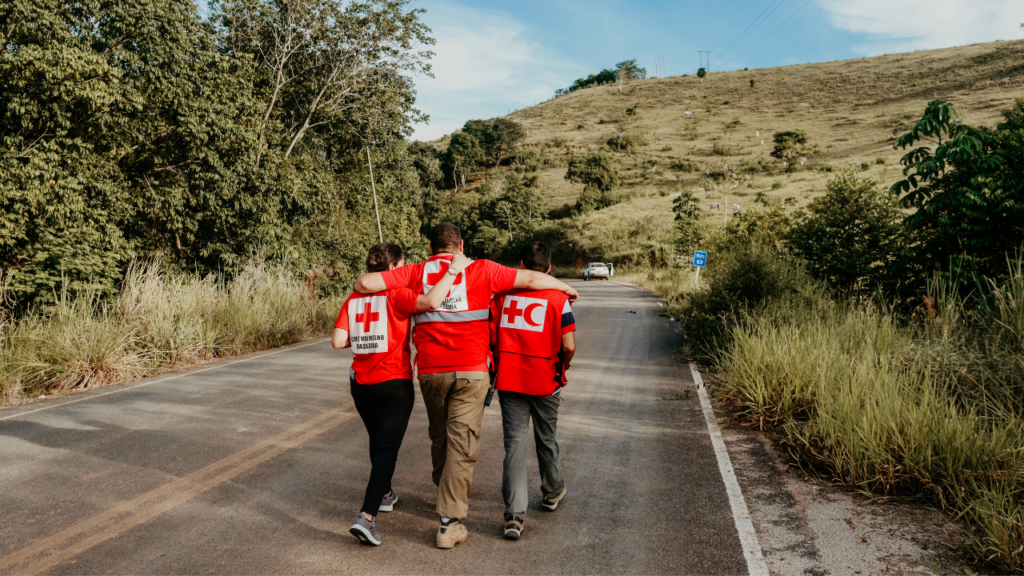
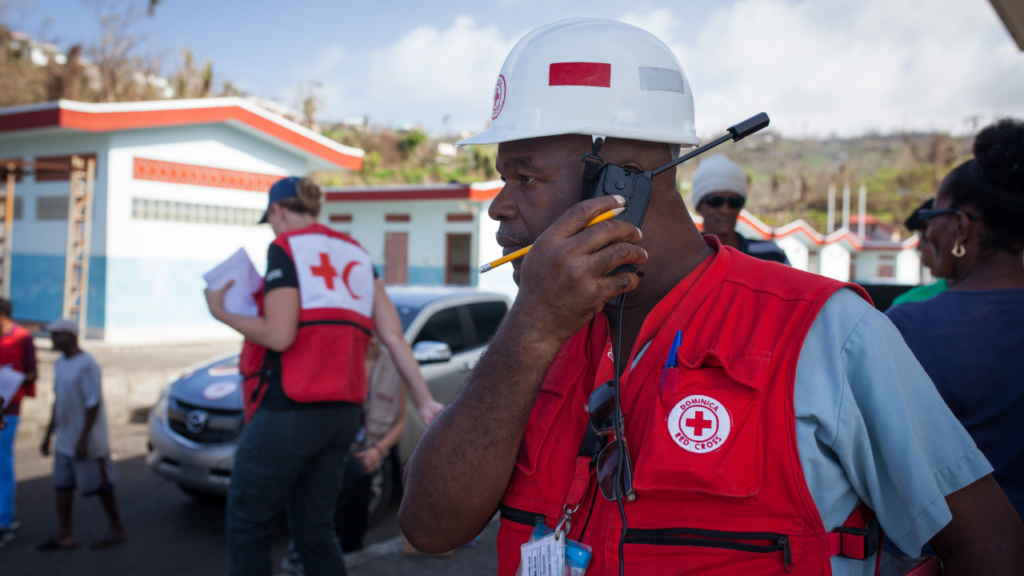
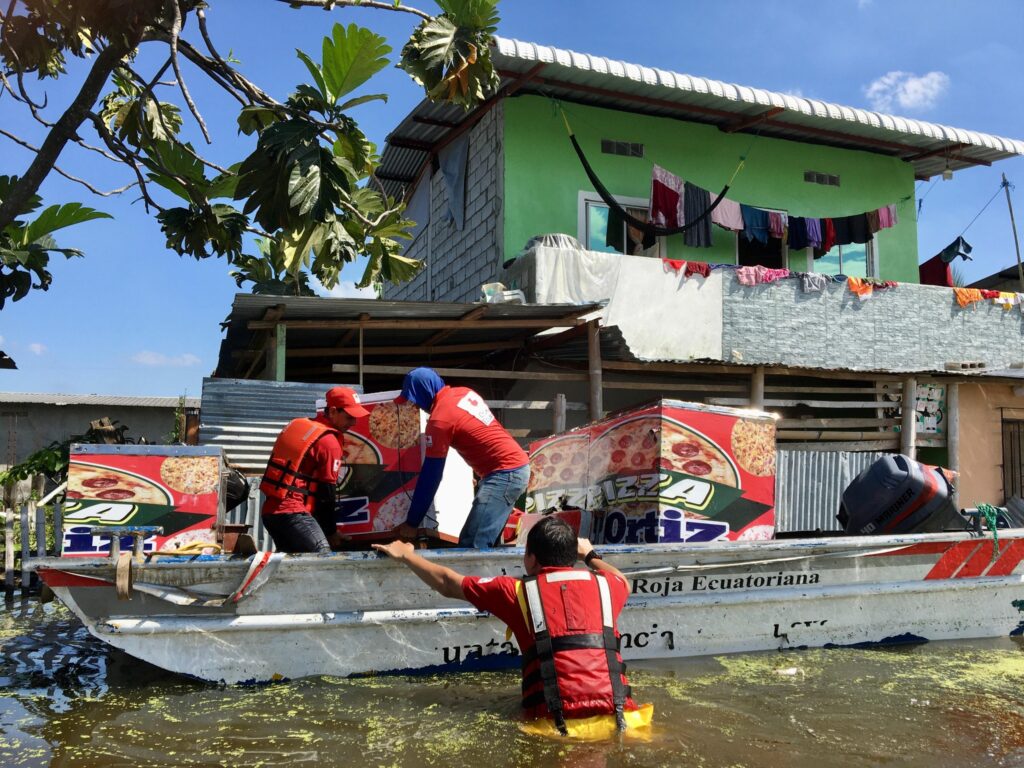
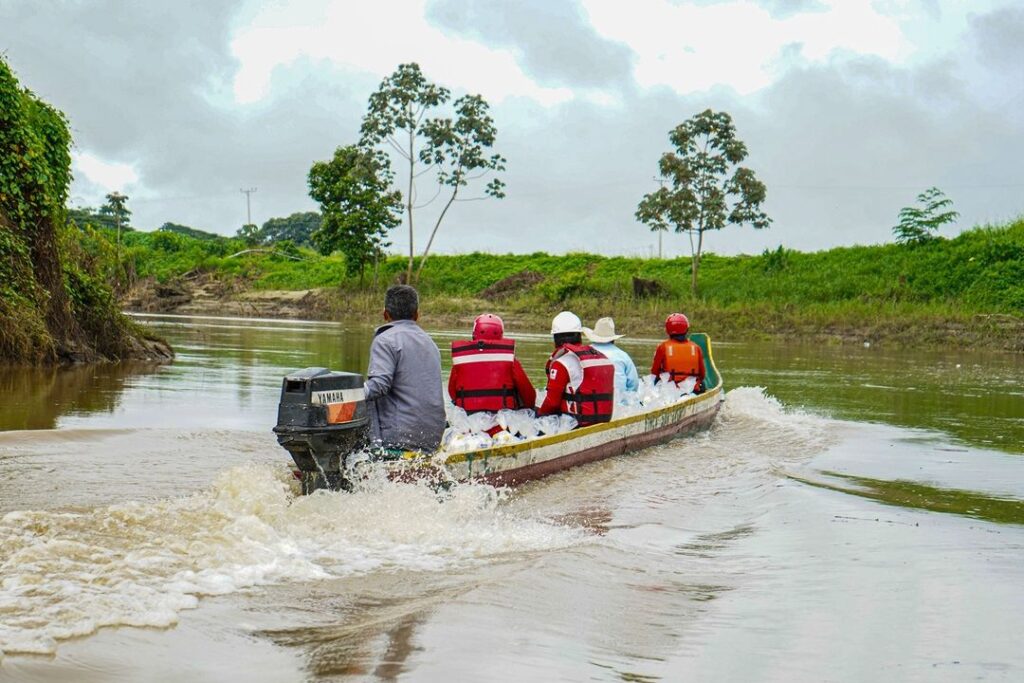
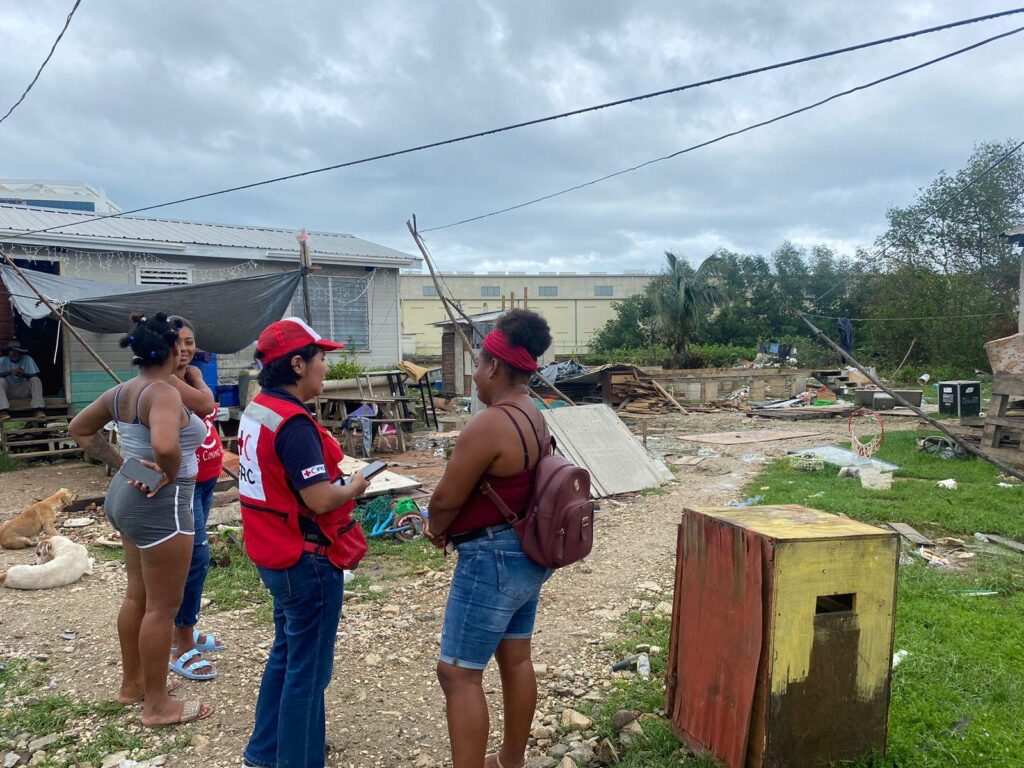
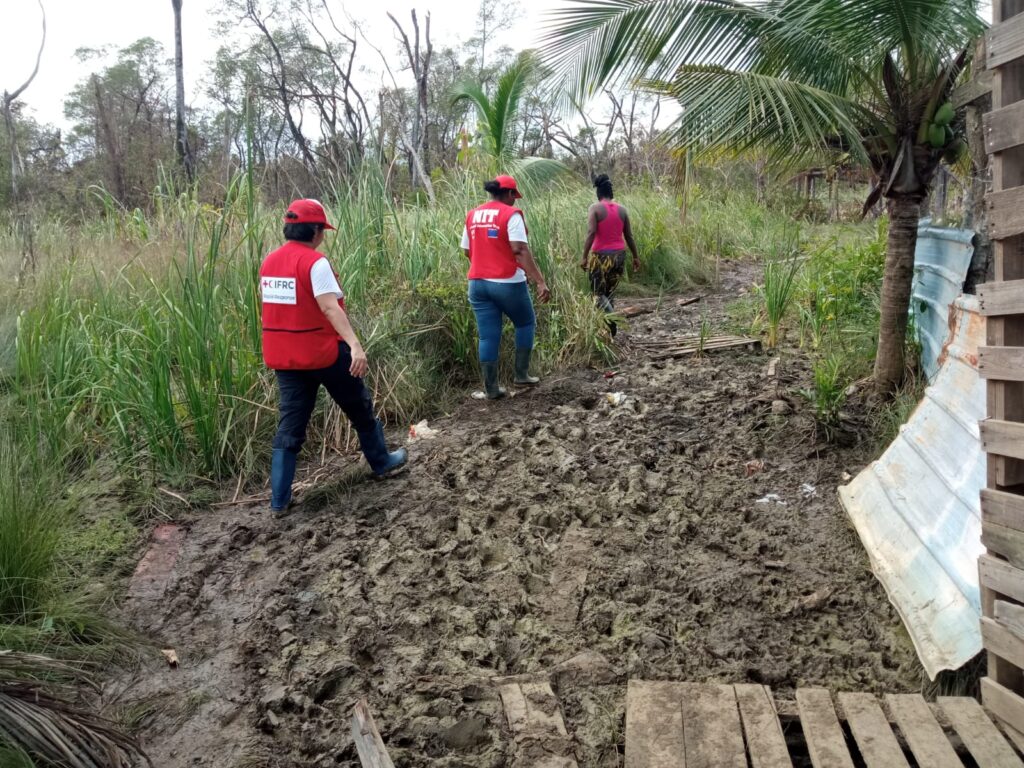
Hurricane Season 2024: A Major Test of Our Collective Preparedness and Resilience
The 2024 edition of the IFRC Pre-Hurricane Conference began with a reminder and a call to action: this cyclone season, we will be challenged by the power of nature, the climate crisis and the increased vulnerability of millions of people, which compels us to improve our preparedness and collective resilience.
The International Federation, CDEMA and CEPREDENAC agreed that our work must be articulated around Early Warning, Early Action and Early Financing, the central theme of the event. This triad will allow us to protect communities and their resources. Early warning is the key to saving lives, but it must be complemented by early action, because we cannot wait to mobilize until people are in danger. And for this approach to work, we need funding that is sustainable, predictable, flexible, and arrives before disasters strike.
According to Colorado State University, the 2024 season indicates the possible formation of up to 24 named storms in the Atlantic Ocean, of which 11 would become hurricanes and five would reach major hurricane status. NOAA has already reported that La Niña will peak between June and September, and that the region is experiencing record high atmospheric and ocean temperatures, favoring increased cyclone activity in the Atlantic.
Our collective preparedness strategies must take into account that while 38 nations and overseas territories in the Americas are exposed to storms and hurricanes, some are particularly vulnerable.
In Haiti, the Dominican Republic, Cuba, and Venezuela, for example, we must redouble our efforts in volunteer support, logistics, security, humanitarian diplomacy, fundraising, public communications, and vulnerability and capacity assessments. We must do everything in our power to anticipate and reduce the impact of hurricanes, and to ensure that when help is needed, it reaches those who need it most in a timely manner.
But whether we face one storm or 20, the hurricane season will test our preparedness and response mechanisms. It will also give us an opportunity to demonstrate the strength of our solidarity and the effectiveness of our planning, which focuses on three main areas: localization, coordination and knowledge.
Localization because communities, including Red Cross volunteers, are the leaders in preparedness, response and recovery. Knowing their needs, listening to their voices and encouraging their participation is essential.
Coordination and alliances, because States, donors, humanitarian agencies and the United Nations system are essential for the Red Cross to fulfil its assistance role and humanitarian mandate. For example, the Framework Agreement between the IFRC and CDEMA and the IFRC’s partnership with the European Union, whose flexible, predictable and medium-term funding allows us to serve more people, better and in less time.
And training, because knowledge is central to learning, innovating and finding solutions to increasingly complex emergencies and overlapping crises.
The opening session concluded with a reminder that while progress has been made in preparedness, anticipation and response, there is still room for improvement in Central America and the Caribbean.
NOAA: an accurate prediction of a storm’s path is as important as an accurate prediction of its intensity
Last year hurricane season had 20 named storms, and seven hurricanes of which three were major hurricanes. In October 2023, hurricane Otis was the strongest hurricane that ever hit Mexico’s Eastern Pacific coast; it intensified quickly. The forecast for Otis was not strong enough, it did not foresee the rapid intensification. This is one of the issues we should be looking at in 2024: an accurate prediction of the storm’s path is as important as an accurate prediction of the storm’s intensity.
The last hurricane season was influenced by El Niño and this one will be influenced by La Niña, but these phenomena are only some of the components that intervene in the level of activity of the season.
Another dare is the storm surge, a complex and dangerous hazard affected by intensity, size, forward speed, angle of approach, trajectory and width and slope of the shelf where the storm or hurricane landfalls.
We have advanced forecast tools, yet consistency on forecasting is key to preparing an early response. For this year there are new rainfall graphics available for tropical cyclones in the Caribbean, Central America, and Mexico. These and other tools created by NOAA will be translated into Spanish.
NOAA’s representatives also explained how risk analysis maps help identify areas more vulnerable and susceptible to storm surge, these are the Storm Surge Maximum Envelope of Water (MEOW) and Storm Surge Maximum of the Maximum (MOM) and both are available on NOAA’s public website for consultation.
Humanitarian coordination: a way to add value and maximize efforts to alleviate human suffering
The maxim of this session was simple: disaster response is a team effort and we must coordinate to overcome the fragmentation, isolation and duplication that limit the scope of humanitarian action. From this perspective, coordination is not an end in itself, but a way to add value and maximize our efforts to alleviate human suffering.
Humanitarian coordination includes harmonizing actions and working together and planning towards a common goal. The stages of effective coordination include exchange of information, collaboration and joint strategic planning; and the essential conditions for its functioning are three: trust, active listening, and generosity.
States, firefighters, Red Cross Societies, NGOs, United Nations agencies and disaster-affected communities are some of the actors that need to be coordinated during disaster preparedness, response and recovery.
The United Nations General Assembly approved a series of measures to govern and promote humanitarian coordination and make it predictable, i.e. to ensure that coordination among humanitarian actors is always conducted in the same way, regardless of the country or type of emergency.
These measures include the establishment of guiding principles for humanitarian action, such as the sovereignty and responsibility of States to lead the response to affected people on their territory. Also, the creation of the Office for the Coordination of Humanitarian Affairs, OCHA; the endorsement of the universal principles of humanitarian action: humanity, neutrality, independence, impartiality; and the creation of global response instruments.
In short, coordination among humanitarian actors must be continuous, diverse, intentional, with people willing to work together, with negotiation and dialogue skills based on trust and listening, and in turn based on coordination within each organization.
IFRC-DREF: Everything you need to know about our anticipation pillar
The Emergency Fund for Disaster Response (IFRC-DREF) is the fastest, most efficient and transparent way to get funding directly to local actors, both before and immediately after a crisis occurs. It has two pillars: anticipatory and response. Within the anticipatory pillar, the key instrument is the Early Action Plan (EAP), which allows the development of three types of activities:
- Readiness activities: these are carried out before the threat is imminent. The National Society must ensure that it can act early. Examples: training of volunteers, agreements with financial service partners, identification of high-risk geographical areas, planning of evacuation routes, coordination with other agencies and institutions.
- Prepositioning of supplies: this is developed before the threat is imminent. It focuses on acquiring all the material required to be able to act early. They must be focused on early action, they are used before the emergency arrives to avoid the destruction of assets and livelihoods. Example: if strong winds are expected to destroy houses, the prepositioning of tool kits to reinforce houses can be contemplated.
- Early actions: these are implemented a few days or hours before the disaster strikes. They are carried out between the period in which the forecast is given and the trigger that confirms the risk is activated; and the impact of the event. Example: Distribution of tool kits, evacuation of people and animals, distribution of cash to save lives and livelihoods, distribution of drinking water to reduce disease.
The anticipatory pillar of the DREF has 3 modalities:
- Full early action protocols: used for both meteorological and non-meteorological events, when the event is not yet on the horizon, i.e. in peacetime. It is valid for 5 years, and the assistance must be intended for at least 10,000 people. All 3 types of activities can be included.
- Simplified early action protocols: Valid for 2 years, it is also developed in peacetime. Must include a minimum of 2,000 people to attend. All 3 types of activities can be included.
- Imminent DREF: Imminent DREF: Implemented when there is already a forecast indicating the development of an event that will affect a certain geographical area and amount of time. All 3 types of activities can be included. In this modality it must be taken into account that the time for implementation is shorter, before the disaster impacts. We are talking about costs associated with early action and not so much with readiness and prepositioning.
The Honduran Red Cross has activated early action protocols for floods and droughts. Its commitment to anticipation allowed this National Society to manage risk in a different way and strengthen its coordination with authorities and scientific analysis institutes, communities and other key actors at local, regional and national levels; all with the aim of making decision-making and anticipatory action more effective.
The Ecuadorian Red Cross Society shared its experience after implementing the Early Action Plan for El Niño-related rains. In the first phase, they conducted a feasibility study that included the country’s historical data. This was shared with specialized technical and scientific institutes and allowed the identification of the triggers that needed to be met to activate the plan. This was a complex process, but it made it possible to respond more quickly to the floods when they occurred.
In this anticipation phase, both National Societies emphasized the importance of strengthening relationships with communities and understanding and managing their expectations, as we will be implementing initiatives to address emergencies that are not yet on the horizon.
The IFRC-DREF efforts in 2023 in the Americas include:
- 26 DREF operations managed by 16 National Societies.
- More than CHF 10 million, +26% over 2022
- 7 operations focused on anticipatory actions
Civil-Military Relations
Latin America and the Caribbean is the second most disaster-prone region in the world, after Asia and the Pacific. It is also a region marked by inequality, population movements and increasing political instability and conflict. This makes it necessary to create and consolidate coordination platforms that reflect the complexity and diversity of the humanitarian challenges we face.
These coordination spaces are led by States, which are the guarantors of people’s rights and responsible for leading the response to crises. It is the authorities who determine whether international assistance is needed or not, and who define the role of the armed forces in disaster response.
It is therefore essential for humanitarian organizations to coordinate with state actors, including military actors; especially in the aftermath of large-scale disasters that exceed national response capacities, or in contexts of armed conflict.
But it is increasingly common to operate in contexts that go beyond this dichotomy. The crisis in Haiti, Afghanistan, Gaza, Somalia and the Horn of Africa are examples of this mix of fragility and complexity, with people affected by violence and famine, displacement and drought, floods and political instability.
The challenge for the Red Cross and Red Crescent Movement, then, is whether in such cases we should coordinate or coexist. The answer is always to be found in our core principles: in either case, our coordination with humanitarian actors will always be guided by the principles of neutrality, impartiality, independence and humanity. And in the case of coordination with a state actor, we will do so from our role as auxiliaries to the public authorities.
In this session, the Colombian Red Cross presented its experience in responding to Eta and Iota, which severely affected the island of Providencia. In this emergency, the Colombian state articulated a single command that brought together civilian and military actors, such as the Red Cross, Civil Defense and various military agencies. Their joint action accelerated the assessment of damage and needs and maximized the scope of humanitarian assistance.
As with coordination with other actors in the humanitarian ecosystem, civil-military relations should aim to alleviate human suffering, ensure access to affected areas, and work in a complementary manner. The key to success is for all parties to get to know each other, develop common hypotheses and scenarios, share risk analyses and, where appropriate, develop joint intervention strategies.
Information management: common languages and definitions for converting information into action
This session addressed key risk concepts such as potential, that which is within the realm of possibility; and probability, the statistics associated with disasters. Also, the concept of loss, whether of life, assets or injuries related to the impact of a disaster on a system, society or community.
He also explored the risk equation, which combines hazard, exposure and vulnerability, depending on the type of hazard. There are many types of risk, so we cannot speak of a single meaning of the term, each situation is unique.
In this framework, several risk analysis models are proposed:
- Prospective risk assessment: to measure future scenarios. This approach handles a high degree of uncertainty.
- Retrospective risk assessment: analyzes historical information on past events, to calculate the risk associated with them, and displays graphs to show the frequency with which events occur.
- Hybrid risk assessment: is the combination of the two previous ones. It combines the strengths of both to obtain a continuous spectrum of risk.
- Systemic and complex risk: It is measured differently, with a dynamic model or artificial intelligence, to capture the complexity of the phenomena involved.
The different information management tools we have available to make these analyses include:
- GO: Tool managed by IFRC to manage risks. This platform was built through a consultation process involving more than 100 National Societies. It brings together the different risks according to the type of hazard, and allows comparison of risk between different countries and time periods. It can also model impacts of a specific event.
- Global crisis data bank: Gathers global information from all public sources, studies by the IFRC and its partners, as well as local information on hazards, impact and response. It allows placing events in context to develop early action protocols and facilitate decisions to prioritize attention according to impact.
These tools are important parts of the National Society Preparedness Framework, the latest version of which was released in August 2023.
This framework was developed to have a common language and definitions for effective communication within the humanitarian ecosystem. In order to improve coordination mechanisms and provide clarity on the spaces in which we must participate, the people who must be present, their roles and objectives.
The framework presents a way of working on risk management through continuity, since disasters often occur before we have recovered from the previous shock. In that sense, preparedness occurs before but also during disasters.
Contingency plans are an excellent way to articulate the different planning processes. The important thing is not only to generate information, but how it is used in contingency plans, during the elaboration of risk analysis and in the construction of scenarios for disaster response, connecting all areas of response in a single umbrella plan.
Finally, the Argentine Red Cross presented its transformation process “From information to action”, in which they went from managing information in different ways in each branch to having a national monitoring team. This work of years has allowed them to use the information for decision making and to work in anticipation. Currently, they have a National Response Plan that serves as an umbrella for adapting response strategies at the local level.
Volunteering in emergencies: Developing the potential of caregivers
The Volunteering in Emergencies session, which was done in the form of a panel discussion, featured representatives from Costa Rica and Belize Red Cross, a guest panelist from the Scout Movement in the Americas, as well as IFRC volunteer coordinators from the Caribbean and Regional offices. The session included discussions on volunteer management before, during and after emergencies.
Before emergencies, it is essential to focus on capacity building, education and training for volunteers. Coordination is necessary in ensuring that volunteers are properly recruited and assigned relevant roles based on their skills and interests. Volunteers need to also be aware of their roles and responsibilities so they understand what is expected of them before, during and after emergencies.
Before emergencies, it is also important to develop partnerships and have in place cooperation agreements which will help strengthen our response.
During emergencies, it is critical to have systems in place to identify burnout among volunteers and offer psychosocial support so they can recuperate. In Belize Red Cross’ experience, following lessons learned from Hurricane Lisa, a volunteer has since been appointed to offer psychosocial support and help look out for burnout among volunteers. Volunteers are also encouraged to look out for each other.
Emergencies can create spontaneous volunteers who offer their assistance, however some will continue to volunteer after the emergency and this needs to be capitalized on and properly coordinated.
Collaboration with other volunteer groups is also important. The Scout Movement which is present in over 75 countries and has over 3 million scouts in the Americas, has collaborated with the Red Cross to respond to emergencies in some countries. Many scout volunteers are also Red Cross volunteers and exemplify the spirit of volunteerism.
Costa Rica Red Cross shared an example of their volunteering network and how they partnered with scouts to respond to emergencies. During Hurricane Otis, the Mexican Red Cross collaborated with scouts to provide on the ground support. It is therefore critical to have a broad network of volunteers which you can rely on to act when needed and find synergies so we can have a better coordinated response.
Maintaining the protection and safety of volunteers during emergencies is also paramount to ensure the well-being of volunteers. Maintaining constant communication is key, with tools such as online forms and WhatsApp proving useful in communicating directly with volunteers.
After emergencies, it is vital to gather feedback from volunteers on what went well as well as challenges faced, but it is equally important to include volunteers in developing the solutions so we can build resilience and “improve together.”
With the intensity and frequency of disasters in our region, it is imperative for us to be prepared for emergencies and this includes working with our communities and taking advantage of various volunteer groups, including the scouts, youth groups, etc.
In everything that we do, volunteers help us to bring better services to our communities. Managing volunteers therefore is a specialized area which should not be taken for granted.

